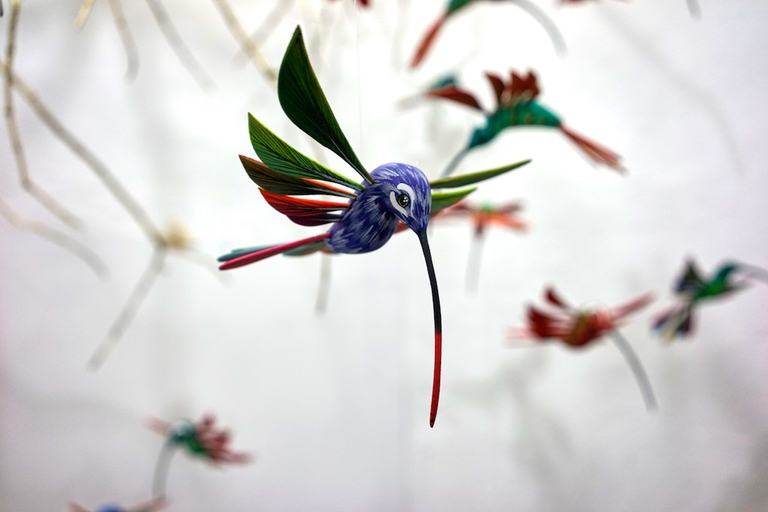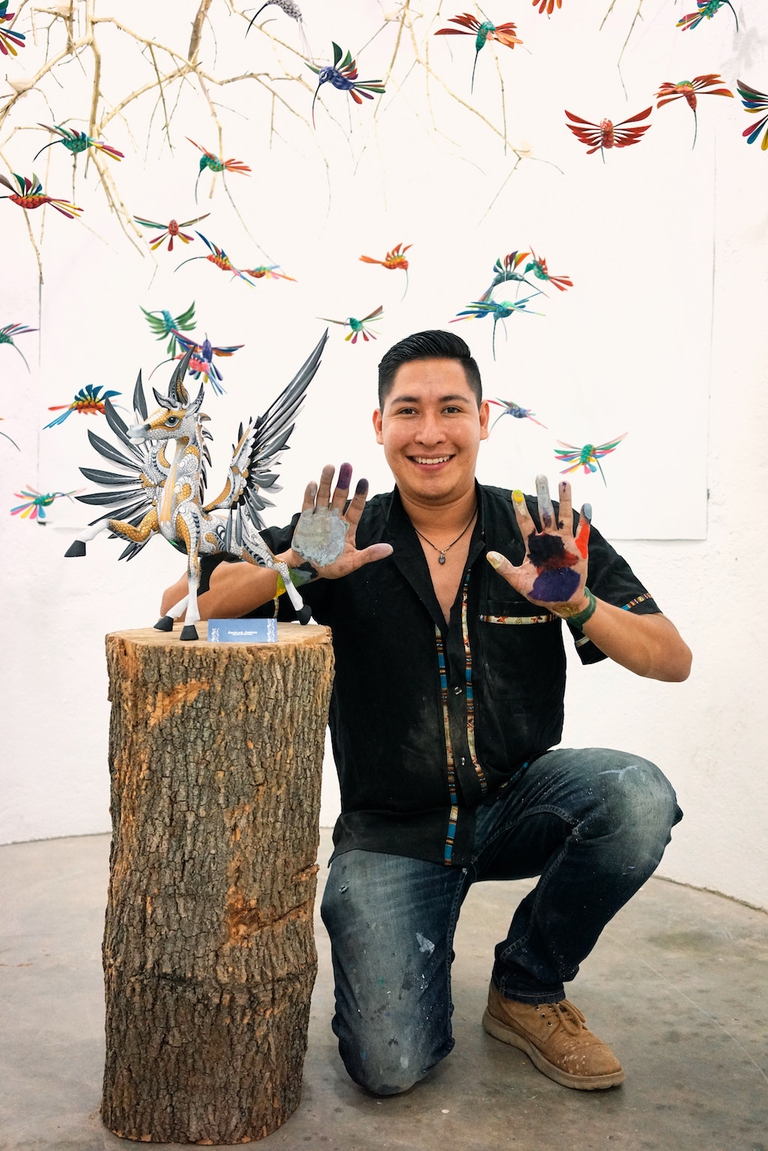
A special report from the Yuqui territory delves deep into the dreams, challenges, joys and sadness of one of Bolivia’s most vulnerable indigenous groups.
We speak to Angélico Jiménez from Oaxaca, Mexico, an artist who carves alebrijes. These fantastic wooden animal figures and their unique patterns preserve Zapotec identity and empower his community.
Born in the town of San Antonio Arrazola in the Mexican state of Oaxaca, Manuel Jiménez is remembered as a pioneer in the art of alebrijes, one of the most popular forms of Mexican folk art. Jiménez, who was born in 1919 and passed away in 2005, started the craft by carving surreal, colourful wooden animal figures. He then transmitted the relevant skills, traditions and passion to his close family and neighbours. Today, in Arrazola as well as in a few nearby villages a majority of the locals live off this craft, and tourism is booming as these fantastic hybrid creatures, now emblematic of Oaxaca, are attracting many from near and far away places.
Manuel Jiménez’s grandson, Angélico Jiménez, is known as one of the most prominent artists in Oaxaca today and has dedicated his life to the craft. “In my family, we’ve been using ancestral techniques to give life to real and surreal beings for three generations now. We only use natural colours, copal wood and draw inspiration from pre-Hispanic Zapotec indigenous culture to create our patterns,” he says. Copal is a local wood from the region that is commonly used by woodworkers and is considered sacred.
Angélico’s choice of patterns is also meticulously researched. A dot, for example, represents new life, feet represent the journey of the people towards their destiny and the snail the contribution to the community. Each piece is custom-made with a lot of love, hard work and patience. “For a high quality piece a minimum of four months are needed – Angélico explains –. For the smaller pieces, we can carve up to 20 a month. First the wood is cut with a machete, then carved with a knife to better give it its shape. It is then left to dry for a while. The wooden figures are then treated, polished, and finally they’re painted.”
“Every piece of art that we create here has a message to give. It has an origin, and a special Zapotec flavour. Alebrijes aren’t just beautiful to look at, they carry the essence and culture of Oaxaca within,” he shares with pride.
Read more: Teixchel, indigenous women in Guatemala weave to fight exclusion
Indeed, alebrijes derive their meaning from Zapotec cosmology. According to the 260-day sacred calendar called piye we all have a tona, an animal that accompanies us throughout our lives. It is believed that this companion influences and shapes the very core of our personality as we naturally adopt and acquire the character of that specific animal we’ve been assigned at birth. “Here, in our town, every child is given their tona from the day they were born – says Angélico –. In our tradition, we have 20 tonas, animals that can be found in our region. This is very important in Zapotec culture: we believe in destiny and the nahual is where it is manifested. It is the union of the animal with the human being, when this merging of personalities happens”.
When people visit his workshop or order pieces online, Angélico always offers to trace their tona back as he believes we can learn a great deal about our strengths and weaknesses, and our unique talents by knowing our animal selves. In order to assign a tona, all he needs is the person’s date and year of birth, as well as the piye at hand.
“It feels incredible to carry and transmit such a rich cultural heritage. From a very young age, in our families we’re told about Zapotec culture and cosmology, and taught how to meaningfully carve wood and paint,” Angélico continues. “It is with love and passion that we continue practicing this, and that we come back to our craft again and again. While we enjoy the process, we also find joy in promoting our hometown and our beautiful state of Oaxaca. It feels incredible to be able to represent Oaxaca both nationally and internationally through our art.”
“I would love to teach and share my work with future generations, just like my grandfather used to do. For as long as I’m alive, I want to do this. I want to transmit this beautiful heritage of ours to preserve it, to make sure that the tree keeps giving fruits. I want children to learn, have fun, and feel proud of their roots. I want them to also have the opportunity to exhibit in art galleries in Mexico and abroad. It is such a great way to empower our people with our own craft and culture.”
Siamo anche su WhatsApp. Segui il canale ufficiale LifeGate per restare aggiornata, aggiornato sulle ultime notizie e sulle nostre attività.
![]()
Quest'opera è distribuita con Licenza Creative Commons Attribuzione - Non commerciale - Non opere derivate 4.0 Internazionale.
A special report from the Yuqui territory delves deep into the dreams, challenges, joys and sadness of one of Bolivia’s most vulnerable indigenous groups.
The Yuqui people of the Bolivian Amazon fight not only to survive in the face of settlers, logging and Covid-19, but to preserve their culture and identity.
Jair Bolsonaro is accused of crimes against humanity for persecuting indigenous Brazilians and destroying the Amazon. We speak to William Bourdon and Charly Salkazanov, the lawyers bringing the case before the ICC.
Activists hail the decision not to hold the 2023 World Anthropology Congress at a controversial Indian school for tribal children as originally planned.
Autumn Peltier is a water defender who began her fight for indigenous Canadians’ right to clean drinking water when she was only eight years old.
The pandemic threatens some of the world’s most endangered indigenous peoples, such as the Great Andamanese of the Andaman and Nicobar Islands in India.
The Upopoy National Ainu Museum has finally opened. With it the indigenous people of Hokkaido are gaining recognition but not access to fundamental rights.
A video shows the violent arrest of indigenous Chief Allan Adam, who was beaten by two Royal Canadian Mounted Police (RCMP) officers.








